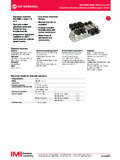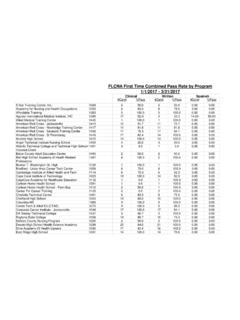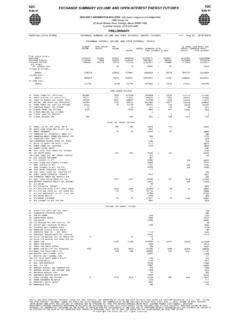Transcription of Title, Contents, Preface - harryhiker.com
1 teacher manual for Introduction to Logic (Routledge Press, 2017 & 2010, third & second e ditions) Harry J. Gensler Loyola University Chicago Using the Textbook 2 Using the LogiCola Software 11 Answers to Problems 15 Chapters 2: 15 3: 18 4: 23 5: 25 6: 29 7: 34 8: 43 9: 51 10: 57 11: 64 12: 70 13: 77 Last modified on October 12, 2017 2009 Harry J. Gensler This manual (along with the LogiCola instructional software and various teaching aids) can be downloaded from: T E A C H E R M A N U A L 2 Using the Textbook My Introduction to Logic is a comprehensive introduction. It covers: syllogisms; informal aspects of reasoning (like meaning and fallacies); inductive reasoning; propositional and quantificational logic; modal, deontic, and belief logic; the formalization of an ethical theory about the golden rule; and metalogic, history of logic, deviant logic, and philosophy of logic.
2 Because of its broad scope, this book can be used for basic logic courses (where teachers can choose from a variety of topics) or more advanced courses (including graduate courses). Two types of logic course are very popular at the college level: intro to logic ( baby logic, intended for general undergraduate students) and symbolic logic (intended for philosophy majors/minors and graduate students, and others who want a more demanding logic course). This chart shows which chapters fit better with which type of course:1 Intro to logic Symbolic logic 01 Introduction 02 Syllogistic Logic 03 Meaning and Definitions 04 Fallacies and Argumentation 05 Inductive Reasoning 06 Basic Propositional Logic 07 Propositional Proofs 08 Basic Quantificational Logic 10 Basic Modal Logic 16 History of Logic 17 Deviant Logic 18 Philosophy of Logic (only easier parts of 16 18)
3 01 Introduction 06 Basic Propositional Logic 07 Propositional Proofs 08 Basic Quantificational Logic 09 Relations and Identity 10 Basic Modal Logic 11 Further Modal Systems 12 Deontic and Imperative Logic 13 Belief Logic 14 A Formalized Ethical Theory 15 Metalogic 16 History of Logic 17 Deviant Logic 18 Philosophy of Logic In both cases, there s much more material than can be covered in a one-term course; so teachers will have to make choices about what they want to cover. Let me tell you what I do in these two types of course, just to give you one possible model (which you ll have to modify in light of your own interests and what your students are like).
4 1 Several chapters presume earlier chapters. Chapters 6 to 14 form a sequence, with each chapter build-ing on previous chapters (except that Chapter 10 depends only on Chapters 6 and 7, and Chapter 11 isn t required for Chapters 12 to 14). Chapter 15 to 18 presume Chapter 6. U S I N G T H E T E X T B O O K 3 This is what I cover in my basic intro to logic course, which is intended for general under-graduate students (where each class period is 50 minutes): Chapters 1 and 2: Introduction and syllogisms (7 class periods + a full-period test). I assign LogiCola (an instructional software program) sets A (EM, ET, HM, & HT) and B (H, S, E, D, C, F, & I). Chapter 6: Basic propositional logic (7 class periods + a full-period test).
5 I assign LogiCola sets C (EM, ET, HM, D (TE, TM, TH, UE, UM, UH, FE, FM, FH, AE, E (S, E, F, and F (SE, SH, IE, IH, CE, & CH). Chapter 7: Propositional proofs (7 class periods + a full-period test). I assign LogiCola sets F (TE & TH) and G (EV, EI, EC, HV, HI, HC, & MC). Chapter 10: Basic modal logic (7 class periods + a full-period test). I assign LogiCola sets J (BM & BT) and K (V, I, & C). The last three class periods are split; the first part of the period is on modal logic while the second is on informal fallacies. Chapters 8 and 4 (Sections & only): Basic quantificational logic and informal fallacies (7 class periods + a final exam which is 3/7 on the new material and 4/7 on pervious material).)))
6 I assign LogiCola sets R; H (EM, ET, HM, and I (EV, EI, EC, HC, & MC). The first two class periods are split; the first part is on informal fal-lacies while the second is on quantificational logic. The last class is a review. I also teach a more advanced symbolic logic course, which is intended for philosophy majors/minors and graduate students, and others who want a more demanding logic course. Since most have had no previous logic, I start from the beginning but move quickly. This is what I cover (where again each class period is 50 minutes): Chapters 1 and 6: Introduction and basic propositional logic (6 class periods + a half-period quiz; the first half of the quiz period introduces the material for the next part).)
7 I assign LogiCola sets C (EM, ET, HM, D (TE, TM, TH, UE, UM, UH, FE, FM, FH, AE, E (S, E, F, and F (SE, SH, IE, IH, CE, & CH). Chapters 7 and 15 (Sections to only): Propositional proofs and metalogic (4 class periods + a half-period quiz; the first half of the quiz period introduces the ma-terial for the next part). I assign LogiCola sets F (TE & TH) and G (EV, EI, EC, HV, HI, HC, & MC). Chapter 8: Basic quantificational logic (5 class periods + a half-period quiz; the first half of the quiz period introduces the material for the next part). I assign LogiCola sets H (EM, ET, HM, & HT) and I (EV, EI, EC, HC, & MC). Chapter 9: Relations and identity (4 class periods + a half-period quiz; the first half of the quiz period introduces the material for the next part).)))
8 I assign LogiCola sets H (IM, IT, RM, & RT) and I (DC, RC, & BC). Chapters 10 and 11: Modal logic (5 class periods + a half-period quiz; the last half of the last class period and the first half of the quiz period introduces the material for the next part). I assign LogiCola sets J (BM, BT, QM, & QT) and K (V, I, C, G, & Q). Chapter 12: Deontic and imperative logic (3 class periods + a half-period quiz; the first half of the quiz period introduces the material for the next part). I assign Logi-Cola sets L (IM, IT, DM, & DT) and M (I, D, & M). T E A C H E R M A N U A L 4 Chapters 13 and 14: Belief logic and a formalized ethical theory (6 class periods + a comprehensive final exam that more heavily weights material from Chapters 10 and 11).
9 I assign LogiCola sets N (BM, BT, WM, WT, RM, & RT) and O (B, W, R, & M). Depending on the group and how fast they catch the material, I also add other topics to the classes mentioned above. Suitable topics, which vary from semester to semester, in-clude G del s theorem (Section ), history of logic (Chapter 16), deviant logic (Chap-ter 17), and philosophy of logic (Chapter 18). If I get behind, I skip or cover quickly some sections that won t be used much further on (for example, , , , and ). I advise against trying to cover the whole book in a one-term course. Since the book has much material, you ll have to pick what to use. What I use, as sketched above, is given as an example.
10 You ll likely want to cover a different selection of materials or use a different In deciding which chapters to teach, I suggest that you consider questions like these: How bright are your students? Teach relations and identity only if your students are very bright. Even basic quantification and modal logic may be too hard for some groups. What areas connect with the interests of your students? Science majors have a special interest in induction, communications majors in informal fallacies, math majors in quantification, and philosophy majors in a whole slew of areas (especially applying logic to philosophical arguments, modal logic, history of logic, deviant logic, and philosophy of logic).




![Writing Your QAPI Plan [Read-Only] - LeadingAge …](/cache/preview/b/9/9/8/2/3/f/a/thumb-b99823fa2ae9636b8ed3230c56f78051.jpg)
